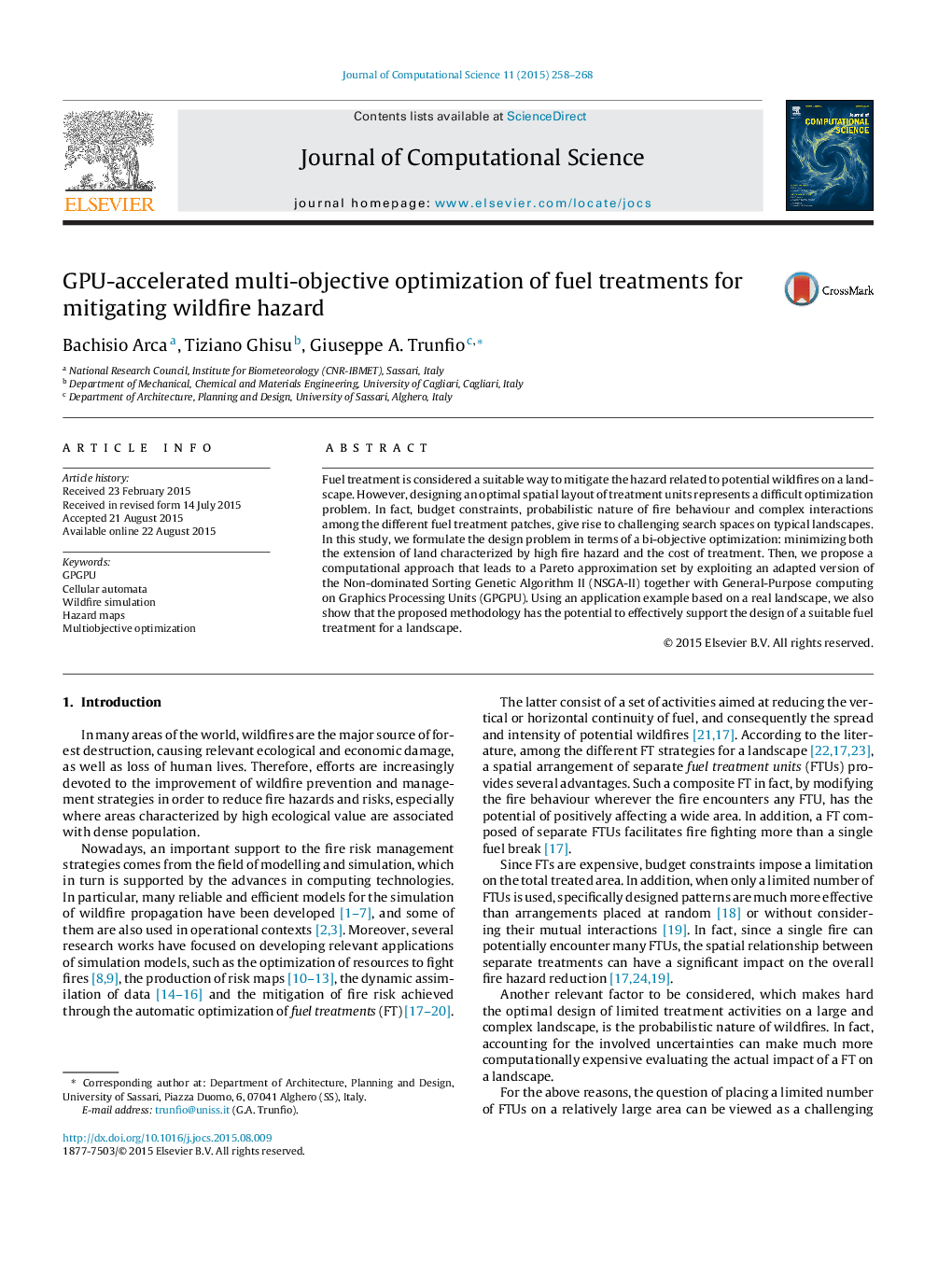| Article ID | Journal | Published Year | Pages | File Type |
|---|---|---|---|---|
| 6874582 | Journal of Computational Science | 2015 | 11 Pages |
Abstract
Fuel treatment is considered a suitable way to mitigate the hazard related to potential wildfires on a landscape. However, designing an optimal spatial layout of treatment units represents a difficult optimization problem. In fact, budget constraints, probabilistic nature of fire behaviour and complex interactions among the different fuel treatment patches, give rise to challenging search spaces on typical landscapes. In this study, we formulate the design problem in terms of a bi-objective optimization: minimizing both the extension of land characterized by high fire hazard and the cost of treatment. Then, we propose a computational approach that leads to a Pareto approximation set by exploiting an adapted version of the Non-dominated Sorting Genetic Algorithm II (NSGA-II) together with General-Purpose computing on Graphics Processing Units (GPGPU). Using an application example based on a real landscape, we also show that the proposed methodology has the potential to effectively support the design of a suitable fuel treatment for a landscape.
Related Topics
Physical Sciences and Engineering
Computer Science
Computational Theory and Mathematics
Authors
Bachisio Arca, Tiziano Ghisu, Giuseppe A. Trunfio,
